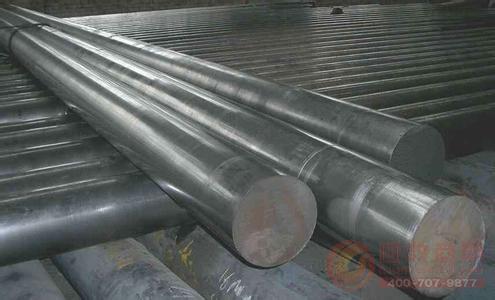
Alloy steel has a history of more than 100 years. The use of alloy steel in the industry is about the second half of the 19th century. At that time, due to the increasing production and use of steel, the machinery manufacturing industry needed to solve the problem of steel machining and cutting. In 1868, the Britishman M. M. (RFMushet) invented the self-hardening steel with a composition of 2.5% Mn-7%W. The cutting speed is increased to 5 m/min. With the development of commerce and transportation, in 1870, a bridge spanning 158.5 meters was built on the Mississippi River with chrome steel (1.5-2.0% Cr) in the United States; due to difficulties in processing components, some industrial countries switched to nickel later. Steel (3.5% Ni) builds long span bridges. At the same time, some countries have also used nickel steel for the construction of warships. With the development of engineering technology, it is required to speed up the rotation speed of the machine. In 1901, high carbon chromium rolling bearing steel appeared in Western Europe. In 1910, the 18W-4Cr-1V high-speed tool steel was developed to further increase the cutting speed to 30 m/min. It can be seen that the advent and development of alloy steel is adapted to the requirements of the development of social productive forces, especially the needs of machinery manufacturing, transportation and military industry.
After the 1920s, the electric arc furnace steelmaking method was promoted and used, which created favorable conditions for mass production of alloy steel. The development of the chemical industry and the power industry has also promoted the expansion of alloy steel varieties, so stainless steel and heat-resistant steel were introduced during this period. In 1920, the German E. Maurer invented the 18-8 type stainless acid-resistant steel. In 1929, the Fe-Cr-al resistance wire appeared in the United States. In 1939, Germany began to use austenitic resistance in the power industry. Hot steel. After the Second World War to the 1960s, the era of high-strength steel and ultra-high-strength steel was mainly developed. Due to the development of the aviation industry and rocket technology, many high-strength steels and ultra-high-strength steels appeared. Precipitation hardening type high strength stainless steel and various low alloy high strength steels are representative steel types. After the 1960s, many new metallurgical technologies, especially the refining technology outside the furnace, were widely adopted. Alloy steel began to develop in the direction of high purity, high precision and ultra-low carbon, and maraging steel and ultra-pure ferrite appeared. New steel grades such as stainless steel. There are thousands of alloy steel grades and tens of thousands of specifications used in the world. The output of alloy steel accounts for about 10% of the total steel output. It is an important metal material used in national economic construction and national defense construction.
The valve is a series of gas emergency Shut Off Solenoid Valves, specially designed as gas pipe breaker for emergency use. It can be connected with gas leaking detection sensor, fire alarm circuit or other intelligent sensor modules so that on site or remote shut down on gas supply (manually or automatically) is possible, hence ensuring the safety on gas usage. The valve features an auto-close when strong vibration is detected. After close, manual operation is required to turn on the valve. This feature meets safety regulations in the event of an accident.
Small Solenoid Valve,Lpg Solenoid Valve,Shut Off Solenoid Valves,High Pressure Solenoid Valve
Rictron Industrial Co , https://www.szrictron.com
![<?echo $_SERVER['SERVER_NAME'];?>](/template/twentyseventeen/skin/images/header.jpg)